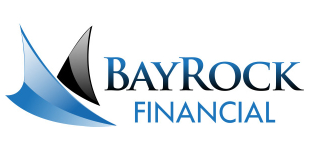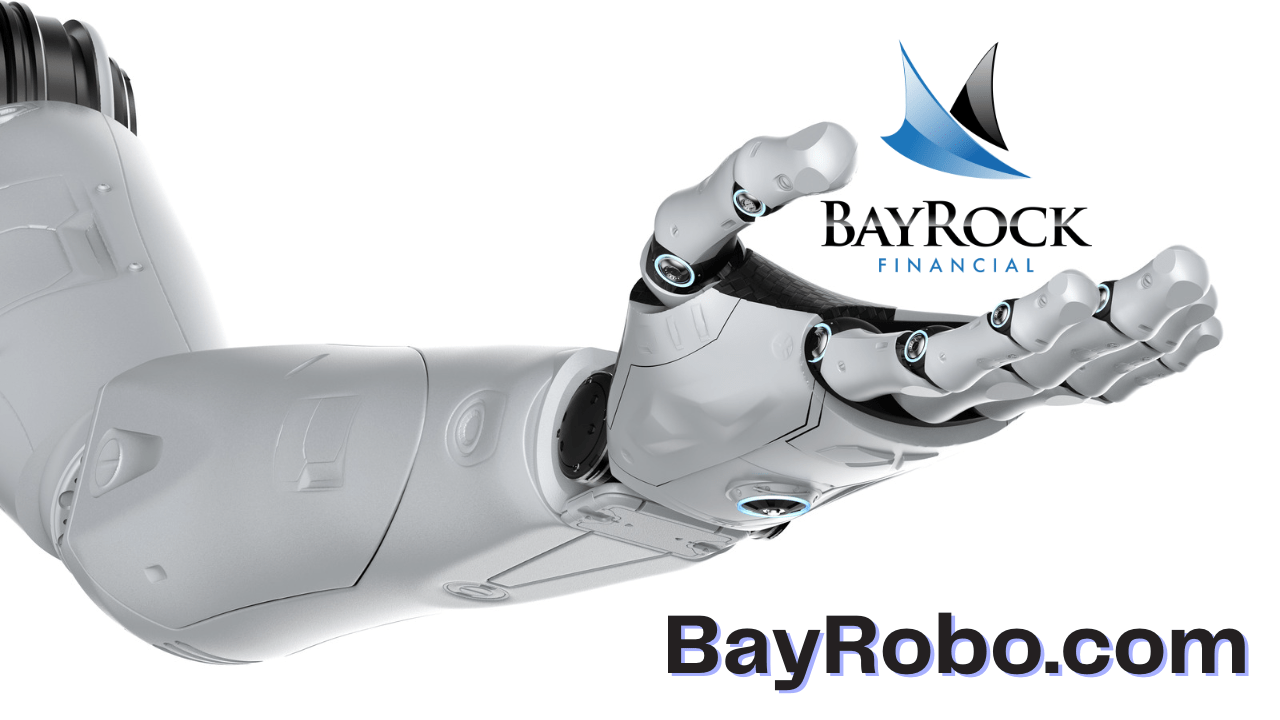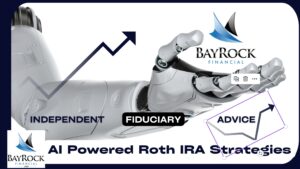BayRobo Roth IRA Strategy
Built by BayRock on the Charles Schwab Intelligent Portfolio Platform
Charles Schwab’s Intelligent Portfolios are a form of automated investment service, often referred to as a robo-advisor. These portfolios are designed to make investing simpler and more accessible to a wide range of investors, from beginners to those with more experience but who may lack the time or desire to manage their investments actively.
Here’s an overview of how Schwab Intelligent Portfolios work:
Automated Investing
-
Algorithm-Driven: The core of Schwab Intelligent Portfolios is an algorithm that selects a diversified mix of exchange-traded funds (ETFs) based on the investor’s risk tolerance, time horizon, and investment goals.
-
Diversification: Investments are spread across various asset classes, such as stocks, bonds, and commodities, to help manage risk and pursue growth.
Customization and Risk Management
-
Risk Assessment: Investors complete a questionnaire that assesses their investment goals, risk tolerance, and time horizon. The service uses this information to recommend a portfolio.
-
Tailored Portfolios: Based on your risk assessment, BayRock offers a portfolio that ranges from conservative to aggressive, aligning with your Risk Number and objectives.
Fees and Minimums
-
About Advisory Fees: One of the notable features of Schwab Intelligent Portfolios is that they do not charge advisory fees, commissions, or account service fees for DIY Investors. However, the ETFs within the portfolio do have their own operating expenses.
-
BayRock Advisory Fees: One of the features of working with an Independent Fiduciary Advisor is that you are charged an advisory fee. If you’re currently a BayRock client, your Robo Advisory Fee will be the same as the fees you’re being charged in your “regular” accounts as outlined on your agreement (usually 1% of Assets Under Management).
-
Account Minimum: There is a $5,000 minimum investment requirement to start using the Robo Platform. This amount has varied over time.
Features and Benefits
-
Automatic Rebalancing: The portfolios are automatically rebalanced as necessary to maintain the target asset allocation, helping to keep the investment strategy on track.
-
Tax-Efficient Strategies: For taxable accounts, the service includes features like tax-loss harvesting, which can help to minimize taxes on investment gains.
Certainly! Including Dollar-Cost Averaging (DCA) and expanding on the benefits:
Dollar-Cost Averaging (DCA)
-
DCA Explained: Dollar-Cost Averaging is an investment strategy where an investor divides up the total amount to be invested across periodic purchases of a target asset in an effort to reduce the impact of volatility on the overall purchase. The purchases occur regardless of the asset’s price and at regular intervals.
-
Benefit for Monthly Deposits: For investors who contribute to their Schwab Intelligent Portfolios on a monthly basis, DCA naturally occurs. This method can be particularly effective in volatile markets, as it allows investors to buy more shares when prices are low and fewer shares when prices are high, potentially lowering the average cost per share over time.
Additional Benefits and Features
-
Adaptive Technology: Schwab Intelligent Portfolios continuously monitors and automatically adjusts the investor’s portfolio to keep it aligned with their chosen risk profile, ensuring that the investment strategy adapts to changes in the market and the investor’s goals.
-
Access to a Broad Range of ETFs: The portfolios are constructed using a wide range of ETFs, which can include domestic and international stocks, bonds, real estate, and commodities, offering broad market exposure and diversification.
-
Cash Allocation: Schwab Intelligent Portfolios includes a cash allocation, managed through the Schwab Intelligent Portfolios Sweep Program, which aims to provide a buffer against market volatility and liquidity for the portfolio. The amount of cash held is based on the investor’s risk profile and investment strategy.
-
Transparency and Control: Investors have access to detailed information about their portfolio’s composition, performance, and transaction history through Schwab’s online platform, allowing for a high degree of transparency and control over their investment.
-
Professional Support: In addition to the benefits of using the Schwab Intelligent Portfolio Platform, BayRock clients get professional investment advice and customer service, providing you with the opportunity to ask questions and get help when needed.
By combining strategies like Dollar-Cost Averaging with the automated management and rebalancing of portfolios, BayRobo aims to offer a convenient and efficient way for investors to grow their wealth over time. These features, alongside the potential tax efficiencies and the ability to invest in a diversified portfolio with a low entry barrier, make Schwab Intelligent Portfolios – built by BayRock – an excellent option for many investors.
Disclaimer
While Schwab Intelligent Portfolios offer several benefits, such as low costs and automated investment management, it’s important for investors to consider their own financial situation, investment goals, and the potential limitations of algorithm-based investing. For example, personalized financial advice from a human advisor might be more suitable for individuals with complex financial situations.
BayRobo Investment Strategies for Volatile Markets
In this older video, I introduced the BayRobo Strategy and invited clients to consider joining me in putting BayRobo in place in their investment portfolio.
Here’s a story from 1998 when I first became a State Farm Agent:
Long before I became a Certified Financial Planner™ professional, I was a State Farm agent in Ridgway, PA. As the “new guy” in town, I had a big challenge to earn trust with my new clients. The agency I was assigned to had about 2,000 households, or families. That included about 2200 auto policies and about 1200 fire policies (homes, rental properties, business policies).
Pennsyvania had an interesting new “Tort Law” provision that impacted auto insurance. In this short video I share the story of how my small team of insurance professionals used this mandatory insurance provision to help our clients save money while building better protection for their families. The work we did on our end was monumental, definitely no easy task. In the end, we earned our clients’ trust and we were able to sell a wide range of financial products to our clients as a result of the trust we earned in the course of each insurance review.

As I’ve prepared to meet with BayRock clients in 2023, I’ve thought about that challenging time back in 1998 at State Farm. It was a ton of work for me and the people on my team. But it was the right thing to do and it always feels good to work hard at doing the right thing.

BayRobo is more than just a new Investment Strategy to sell to my clients at BayRock Financial. BayRobo is the investment strategy I’m using for my investments and for my family.
Each and every client who has ever hired BayRock for Investment Management has heard my “sales pitch”. For many years, even after becoming a CFP® Professional, I searched high and low to find an Investment Advisor who would look me in the eye and tell me that the investment program they were “selling” me was the same investment program they used for themselves and their family.
Believe it or not, I was never successful in finding a Certified Financial Planner™ professional (or any other investment advisor for that matter) who could meet that standard.
I went to work on Wall Street at Morgan Stanley in the Wealth Management department because I wanted to learn everything I needed to know to create Smarter Strategies and Better Results for myself AND MY CLIENTS.
From day one I’ve been selling the same investment strategies to my clients as I’ve been using for my own investments.
Today, I’m announcing a new set of investment strategies and in the weeks ahead, I’ll share much more about the strategies and the reasons for the changes.
What Is an ETF Exchange-Traded Fund?
An exchange-traded fund (ETF) is a type of pooled investment security that operates much like a mutual fund. Typically, ETFs will track a particular index, sector, commodity, or other assets, but unlike mutual funds, ETFs can be purchased or sold on a stock exchange the same way that a regular stock can. An ETF can be structured to track anything from the price of an individual commodity to a large and diverse collection of securities. ETFs can even be structured to track specific investment strategies.
The first ETF was the SPDR S&P 500 ETF (SPY), which tracks the S&P 500 Index, and which remains an actively traded ETF today.
Key Takeaways
-
An exchange-traded fund (ETF) is a basket of securities that trades on an exchange just like a stock does.
-
ETF share prices fluctuate all day as the ETF is bought and sold; this is different from mutual funds, which only trade once a day after the market closes.
-
ETFs can contain all types of investments, including stocks, commodities, or bonds; some offer U.S.-only holdings, while others are international.
-
ETFs offer low expense ratios and fewer broker commissions than buying the stocks individually.
Read What is an ETF by Investopedia
The Inflation Planning Blueprint
Inflation will continue to push prices up and the FED is committed to keeping inflation at bay by raising interest rates. This will continue to create market volatility. Check out our Inflation Planning Blueprint before you make changes to your investment portfolio.

Financial Planning – Not Investment Management – is What Matters Most
If you are currently a BayRock client with at least $500,000 invested, you are entitled to complimentary financial planning. Its already a part of your service agreement with BayRock. If you’re still building wealth, we offer a low-cost, high touch financial planning service for any budget.
Fee Based Financial Planning services are offered at three pricing levels designed to address three different levels of financial planning needs from simple to more complex. Each Fee Based Financial Planning level provides additional services.
Click here to learn more about Fee Based Financial Planning by BayRock.
Investing in Volatile Markets, 7 Considerations

-
Market volatility is unnerving, but normal, it is a feature of long-term investing.
-
Market volatility is not fun, but you can expect to see market declines periodically throughout your investing career.
-
Yet it’s hard to sit still when the market is sliding. You can’t help but think: “Shouldn’t I be doing something?”
-
Every investor is different, but here are 7 things you should consider when investing in volatile markets:
1. Resist the urge to sell based solely on recent market movements.
Selling stocks when markets drop can make temporary losses permanent. Staying the course, while difficult emotionally, may be healthier for your portfolio. This doesn’t mean you should hold on blindly, but we suggest taking into account an investment’s future prospects and the role it plays in your portfolio, rather than being guided by noise and fear.
2. Take the long view.
Markets typically go up and down, and you’re likely to experience several significant declines during a long investing career. But even bear markets—that is, periods when the market fell by more than 20%—historically have been relatively short when compared to bull markets. Because timing the market’s ups and downs is nearly impossible, but all investors would do well to ignore the noise and stay focused on their plans.
Past bear markets have tended to be shorter than bull markets

Source: Schwab Center for Financial Research with data provided by Bloomberg.
Data as of 12/31/2021. The market is represented by daily price returns of the S&P 500 index. Bear markets are defined as periods with cumulative declines of at least 20% from the previous peak close. Its duration is measured as the number of days from the previous peak close to the lowest close reached after it has fallen at least 20%, and includes weekends and holidays. Periods between bear markets are designated as bull markets. Indices are unmanaged, do not incur fees or expenses, and cannot be invested in directly. Past performance is no guarantee of future results.
3. Review your risk tolerance and your risk capacity

Risk tolerance is your ability to emotionally handle big price swings; risk capacity is your financial ability to take a loss. Market downturns can be a wake-up call to reconsider your risk tolerance, although we recommend waiting until you’re calm. Risk capacity, however, can—and should—be considered at any time. Do you have enough cash to handle near-term goals? Money that you’ll need soon or that you can’t afford to lose shouldn’t be in the stock market—it’s best invested in relatively stable assets, such as money market funds, certificates of deposit (CDs), or Treasury bills. If you’re retired, having your next 12 months of living expenses in a bank account or money market fund—and a few more years’ worth in bonds that mature when you need the money—can help you stay calm when stock markets are not.
4. Make sure you have a diversified portfolio
Volatile markets also can reveal that portfolios their owners thought were appropriately diversified in fact aren’t. If you haven’t looked at your portfolio recently to make sure you understand what each asset class is doing and that the mix matches your target asset allocation, now is a good time to become reacquainted with it. Schwab’s investor profile questionnaire can help you determine your profile and match it to an appropriate target asset allocation.
5. Consider including defensive assets for more stability
Defensive assets, such as cash and cash equivalents, Treasury securities and other U.S. government bonds, can help stabilize a portfolio when stocks are slipping. Also, if you expect to spend from your portfolio within the next few years, it’s a good idea to keep that money in assets that historically have been relatively liquid and less volatile than stocks, such as cash and short-term bonds. This can help you avoid having to sell in a down market.
6. Rebalance your portfolio as needed
Market changes can skew your allocation from its original target. Over time, assets that have gained in value will account for more of your portfolio, while those that have declined will account for less. Rebalancing means selling positions that have become overweight in relation to the rest of your portfolio, and moving the proceeds to positions that have become underweight. It’s a good idea to do this at regular intervals.
7. Adapt your trading to fast-moving markets
If you must trade during volatile markets, take current conditions into account when entering orders. Be careful when trading during the first and last hours of the trading session, which tend to be the most volatile. Trade smaller positions, and consider “scaling” in or out of positions by buying or selling stock in increments as the price fluctuates.
There are defensive steps you can take to protect an unrealized gain or limit potential losses on an existing position, such as stop orders and stop-limit orders.1These can help make your decision-making more automatic and less reliant on doing the right thing in the heat of the moment.
1 There is no guarantee that execution of a stop order will be at or near the stop price.
BayRobo Options Trading Strategies
Options Trading Strategies for Managing Risk
One of the tools in my investment management toolbox is Options, specifically Covered Call Options and Naked Put Options. I’m reaching out to a number of my clients to recommend that we set up Options. These two Options Strategies work best in volatile markets like what we’ve had in 2022. Options provide better risk management while allowing us to create an additional income stream within your IRA Account.
Sell a Naked Put If…
Let’s say you want to buy 100 shares of SPY and its trading today at $380. Instead of buying the SPY ETF at $380 per share, you could sell to open 1put contract with a strike price of $280 and receive a credit (income) in the amount of $850 in our example. If the SPY is $381 on the expiration date (let’s say in 20 days…) you get to keep the $850.
On the other hand, if SPY is trading at $279 on the expiration day, you will be the proud owner of 100 shares of SPY and you will be obliged to buy 100 shares for $380 per share (but remember you got paid $850 so your $100 loss is actually a $750 gain…)
Margin and Options
This post is specifially for Tax Qualified accounts. We can use additional strategies in Non-Tax Qualified accounts with Margin. Each strategy has its own set of Risk Metrics. In this post, I’ve grabbed some helpful content from Investopedia, my favorite source for Investor Education.

What are Options
Options are a form of derivative contract that gives buyers of the contracts (the option holders) the right (but not the obligation) to buy or sell a security at a chosen price at some point in the future. Option buyers are charged an amount called a premium by the sellers for such a right. Should market prices be unfavorable for option holders, they will let the option expire worthless and not exercise this right, ensuring that potential losses are not higher than the premium. On the other hand, if the market moves in the direction that makes this right more valuable, it makes use of it.
Options are generally divided into “call” and “put” contracts. With a call option, the buyer of the contract purchases the right to buy the underlying asset in the future at a predetermined price, called exercise price or strike price. With a put option, the buyer acquires the right to sell the underlying asset in the future at the predetermined price.
Let’s take a look at some basic strategies that a beginner investor can use with calls or puts to limit their risk. The first two involve using options to place a direction bet with a limited downside if the bet goes wrong. The others involve hedging strategies laid on top of existing positions.
BayRock Advisory Services
At BayRock, we believe in the value of fiduciary advice and we believe in the benefits creating a comprehensive of financial plan, especially during times of uncertainty and market volatility, as we experienced throughout 2022. It can be psychologically draining to weather market swings, and this is where fiduciary financial advice from a CFP® Professional can help by creating a plan and helping you stick to it.
BayRock Discretionary Portfolio Management
BayRobo Automated Portfolio
For those who prefer the convenience of a robo-advisor, BayRobo Automated Portfolio will build a customized portfolio and continue to optimize your investments over time. You get the benefit of BayRock’s time-tested investment process delivered on a modern, all-digital platform that can quickly evolve with your needs and as things change in the market.
BayRobo Automated Portfolio Offers:
-
100% online money management that’s simple, yet sophisticated.
-
Recommendations based on your Risk Number and retirement and other financial goals.
-
Guidance that adapts to your evolving needs—and adjusts to changes in the market.
-
An easy and accessible platform so you can check in anytime right from your phone.
Smarter Strategies and Better Results
-
Tax-smart tools.
Automated and optimized tax strategies designed to help minimize tax impact on returns.
-
Lower costs.
Keep more money in your portfolio with low-cost exchange-traded funds (ETFs) and our transparent pricing.
-
Adjusts automatically.
Your investments are rebalanced as the market moves once at the minimum account balance, with dividends getting reinvested.
Tax Loss Harvesting
Tax Loss Harvesting is widely trumpeted by the wealth management industry as low hanging fruit for boosting after-tax returns. The dirty little secret is that not everybody wins. This is a topic I will be talking about in coming episodes on Missional Money Podcast in our Tax Tip Tuesday Segment.

With tax-loss harvesting, you reap what you sow
There are a few time-honored strategies for building long-term wealth: diversifying assets across a mix of stocks and bonds; avoiding a panicked sell when the market turns sour; not trying to time the market just right. Add to the list a relative newcomer — tax-loss harvesting.
But the increasingly popular strategy is not as straightforward as it seems, and contrary to the wealth management industry’s cheerleading, it works better for some investors than others.
Tax-loss harvesting involves intentionally selling a security and taking a loss that is then used to offset a gain come tax time, either within the same portfolio or elsewhere. If the losses exceed gains, an investor can use them to offset, or reduce, up to $3,000 of ordinary income a year, and carry leftover amounts forward to reduce taxable income on future gains. Under the wash-sale rule — intended to prevent gaming the system for tax benefits — an investor has to wait at least 30 days to repurchase the same stock or similar stocks.
Why BayRock offers BayRobo
From robo advisors like Wealthfront to Main Street brokerages like Fidelity Investments to Wall Street wirehouses and private banks that cater to the wealthy, the strategy is pitched as good for any investor. Whether ultrarich or middle class, the industry’s messaging goes, everybody can benefit from more tax “alpha,” or returns on an after-tax basis. Aperio, which is owned by BlackRock and creates bespoke portfolios for wealthy clients, says the technique can boost after-tax returns by 0.81%–1.93% over a 10-year period when compared with a comparable index fund or exchange-traded fund.
The “robo” strategy is gaining mindshare thanks to the growth of direct indexing and its pitch to retail investors of all stripes. Direct indexing involves buying stocks held in an index, such as the S&P 500, then selling those that decline. When markets are rising, loss harvesting lets investors lock in the gains of an index while generating losses that can offset taxable profits.
Powered by Purpose
Finally. Financial advice based on What Matters Most – to YOU. BayRock advisors are committed to your investing success. As fiduciaries, we have a singular focus—helping you create a compelling financial plan to…
Save More Money
Pay Lower Taxes
Build a Better Retirement
All you need to do is e-sign your DocuSign Envelope
With New Digital Onboarding Enhancements, Schwab Advisor Services Makes it Easier to Open Multiple Client Accounts for Households. At BayRock Financial, we love Charles Schwab and we especially appreciate their use of technology to make our job as your Independent Fiduciary RIA more efficient. Thank you Charles Schwab and Company for making our lives easier so that we can spend more time making our clients’ lives easier, too.

See what BayRock Advisory Services can do for you
Get personal advice when you need it most
Or you can call us at 832-895-1700
Monday through Friday,
8 a.m. to 5 p.m










